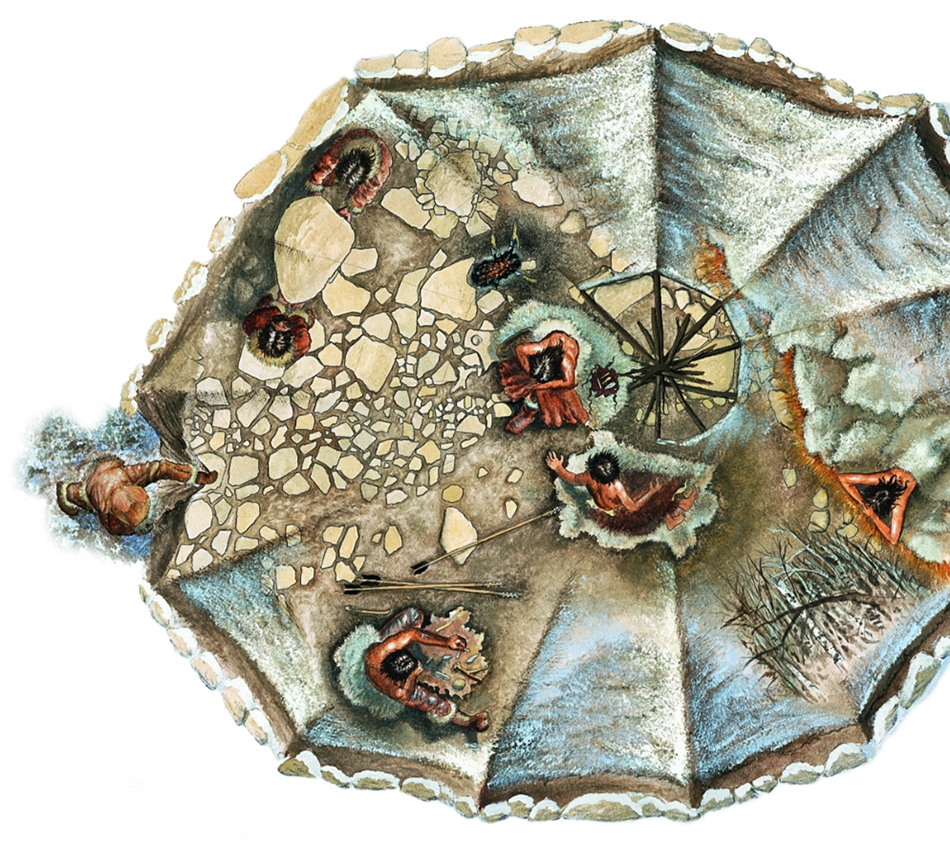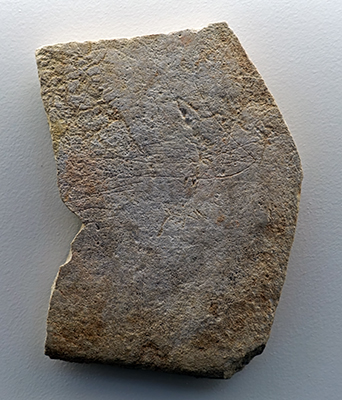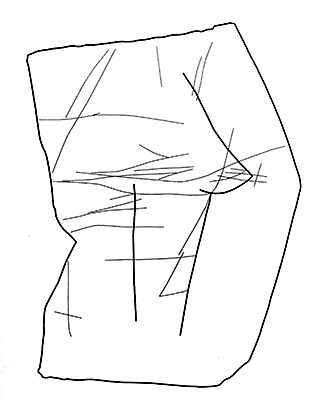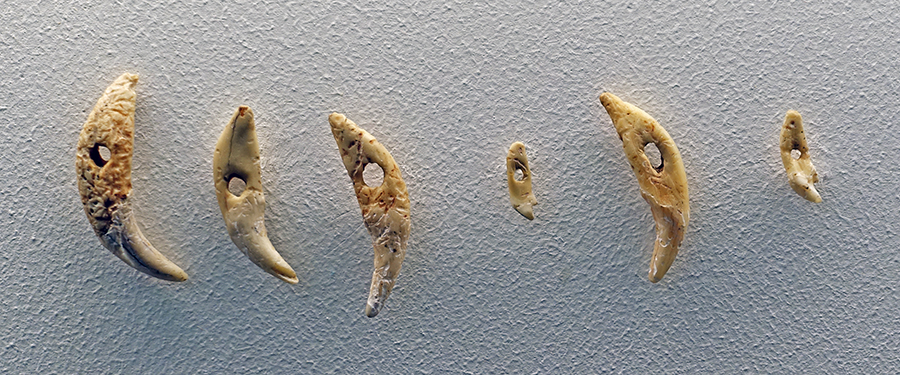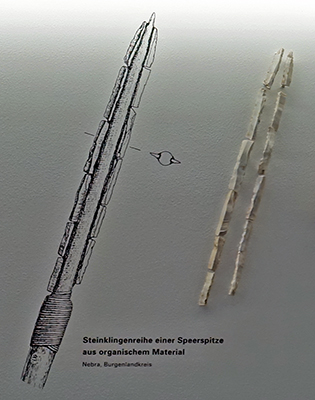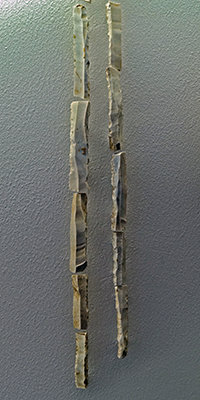Back to Don's Maps
Back to Venus figures from the Stone Age
The Nebra Venus - Die Venus von Nebra
A hunter camp of the Stone Age
Translated from http://nebra-06642.de/de/venus.htm:

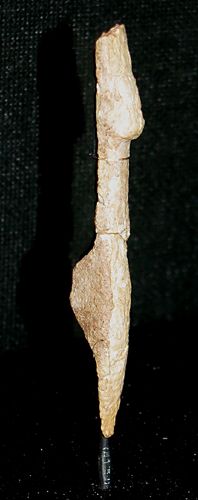
The Nebra Venus - Die Venus von Nebra
The card on the display read:
Venus von Nebra
Sachsen-Anhalt, Deutschland
15 000 Jahre (Magdalénien)
Knochen
Original
Leihgabe: Landesmuseum.
Which translates as Venus from Nebra, 15 000 years old, bone, original, on loan from the Landesmuseum.
(note however that other sources state that this Nebra Venus is of reindeer antler. It is number two in the four images below - Don )
Photo: Don Hitchcock 2008
Source: Original in the Vienna Natural History Museum
The Nebra area, showing the river Unstrut.
Photo: Ralf
Source: Google Maps
Reconstruction of the activity zones in the tent-like circular building at the Nebra hunting camp.
A spur of a hill juts out into the Unstrut valley near Nebra, from which point one has an excellent view of the surrounding valleys and ridges. This panoramic prospect was probably what prompted a small community of Ice Age people to set up camp there year after year, about 15 000 years ago. It ensured a constant observation of the game trails of reindeer and horse herds, which ran through the valley landscape or across the plateaus.
In a sheltered depression, the remains of a dwelling were discovered on which once probably stood a domed tent six to seven metres in diameter. More than 12 000 stone artefacts and more than 5 000 animal bones were found within the still preserved oval floor plan, some of which are interpreted as leftovers and some as waste from fur processing. The tent area was clearly divided into three zones: rest, activity, and fire area.
Photo and text: © State Office for Heritage Management and Archaeology Saxony-Anhalt, Karol Schauer.
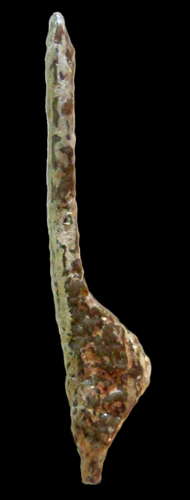
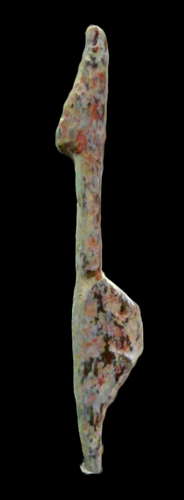

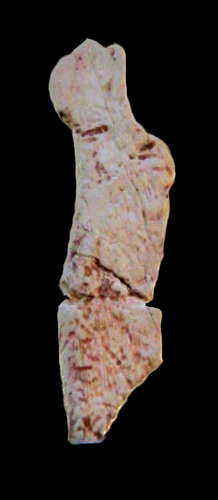
Three venus figures (figures 1, 2, 3) and an anthropomorphic figurine from Nebra. The objects appear to be facsimiles.
Photo: Daly Galaxy
Permission: licensed under the Creative Commons license Attribution-Noncommercial-Share Alike 3.0 Unported license.
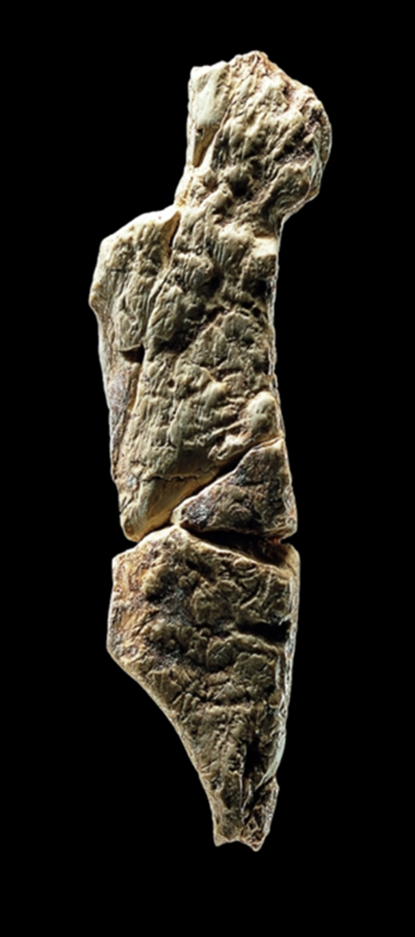

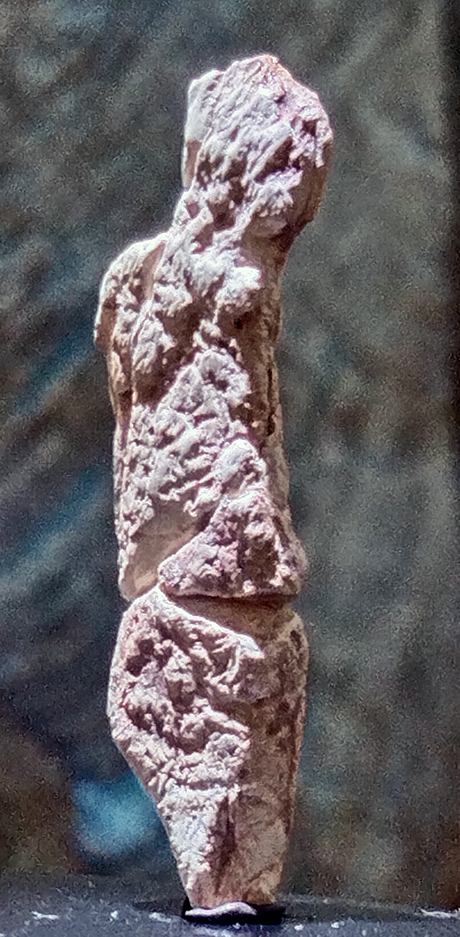
Anthropomorphic figure
Height 52 mm, width 9.5 mm, thickness 4 mm, ivory, from Pit 22
This statuette from Nebra could symbolise a special being from hunter mythology.
Text and photo (top left): © State Office for Heritage Management and Archaeology Saxony-Anhalt, Juraj Liptak.
Photo (top right and lower left): Courtesy of Michael Hess



Sculptures of women seen in profile, from Nebra.
Mammoth ivory and bone (left)
Heights 63 mm, 65 mm, 52 mm
Photo and text: Cook (2013)
Source: Originals, Landesmuseum für Urgesschicte, Halle (Saale)
The following text is adapted from Wikipedia:
The Nebra figurines are highly stylised statuettes dating from the late Upper Paleolithic ( Magdalenian ) and are the oldest known works of art in Saxony-Anhalt. They date from 14 000 - 13 000 BP and were discovered in 1962. The figurines are now in the permanent exhibition at the Vienna National Museum of Prehistory.
The figures were found in the summer of 1962 during an emergency archeology rescue dig at an ancient castle in Unstruttal northeast of Nebra. The site was a 120 square metre open air site used by hunters in the late Upper Paleolithic, 14 000 - 13 000 BP, the Magdalenian. The excavators, Volker Toepfer, Helmut Hanitzsch and Dietrich Mania, discovered about sixty pit-like depressions and parts of a light red coloured flagstone pavement on a semi-circular area of 9 m × 3.5 m, where the Stone Age traces had been partly destroyed by a later Bronze Age settlement and a medieval moat.
Most of the pits had a depth of more than half a metre and contained besides a large number of types of artefacts made of stone, antler and bone well preserved remains of game animals and sandstone slabs, which had evidently served as wedges for the tent poles. The analysis of the animal bones showed the fauna was composed mainly of wild horse and reindeer. Furthermore, a hare , arctic fox and ptarmigan were found. Thse finds indicate a winter campground of Paleolithic Ice Age hunters and suggest an early stage of the Magdalenian.
The four extremely simplified statuettes have a length from 52 mm to 66 mm. In side view, three of them have the silhouette of a human body, with a rod-shaped torso and buttocks accentuated. In addition, they are undecorated and have been created without head and feet. Due to the partially indicated breasts, these are most likely to representations of women. The fourth figure differs from the aforementioned female statuettes. Although it has the same base as the female figurines, the upper body is represented differently.
| Figurines | Length | Width | Thickness | Material | Source |
|---|---|---|---|---|---|
| Figure 1, female | 66 mm | 11 mm | 6 mm | Ivory | Pit 50 |
| Figure 2, female | 63 mm | 11 mm | 5 mm | Reindeer antler | Pit 33 |
| Figure 3, female | 52 mm | 9.5 mm | 4 mm | Ivory | Pit 7 |
| Anthropomorphic figurine | 52 mm | 9.5 mm | 4 mm | Ivory | Pit 22 |
Figure 1: This is made of light yellowish ivory. The long, straight, rod-shaped top, which is inclined slightly to the rear, shows no hint of a breast. The bottom section is over-emphasised and has a convex-triangular form.
The statuette was in pit 50, formed from six thin, vertical sandstone slabs with dimensions of approximately 20 × 30 cm. The joints between the stones were filled with bone and the shoulder blade of a horse. A 60 × 70 cm long horizontal sandstone slab covered the stone box. Many bones and bone fragments, especially of horse and reindeer , and a broken piece of travertine limestone, which may have been used as an oil lamp, grease lamp or as a sacrificial vessel, were incorporated into this pit. Also included in the pit were some forty blades and flint flakes, and 25 tools of various types. The pit and the stone box were coloured with ochre.
Figure 2 : This figurine is carved from reindeer antler. The colour is grey-white with a reddish tinge. The base tapers from an exaggeratedly convex buttock.
By contrast the top, with prominently crafted breasts, is slightly tilted backwards.
This female figure came from the tent pole pit 33. The pit had a circular plan and was sunk 65cm into the ground. Also included in this pit were some forty bones or bone fragments, 15 tools, 11 burins and 57 blades and flakes.
Figure 3 : This figurine has been carved and polished, and, like the first figurine, is made of ivory. This woman figurine was found, broken, in the tent pole pit 7.
The pit had a cylindrical shape with a diameter of 30 cm. It also included about eighty bones, bone fragments and fish vertebrae. Furthermore, were found in this pit twenty tools, twelve burins, eighty blades and flakes from white patinated flints.
Anthropomorphic figurine : this stylised, anthropomorphic figure of ivory was found in the pit 22. Its lower part is shaped like the female figurines, with their backs forming a kind of hump. It also has a slightly forward-sloping head.
Gönnersdorf type figurines
According to the described features, the Nebra venus figures are assigned to the Gönnersdorf style of figurines.
Characteristic features of the 'Gönnersdorf style':
There is no head shown
the figurines have a slender body
the characters have accentuated, overlarge buttocks
The representations are meant to be seen in profile.
The female figurines of the sites: Gourdan – Courbet – Fontalès – Mégarnie – Gönnersdorf – Andernach – Hohlenstein – Petersfels – Neuchâtel-Monruz – Oelknkitz – Garsitz – Pekarna – Býčí skála – Menzin – Mežirič – Dobraničevka also belong to this type.
Overall, there are currently about 95 statuettes of the 'representation principle of Gönnersdorf' from 17 sites.
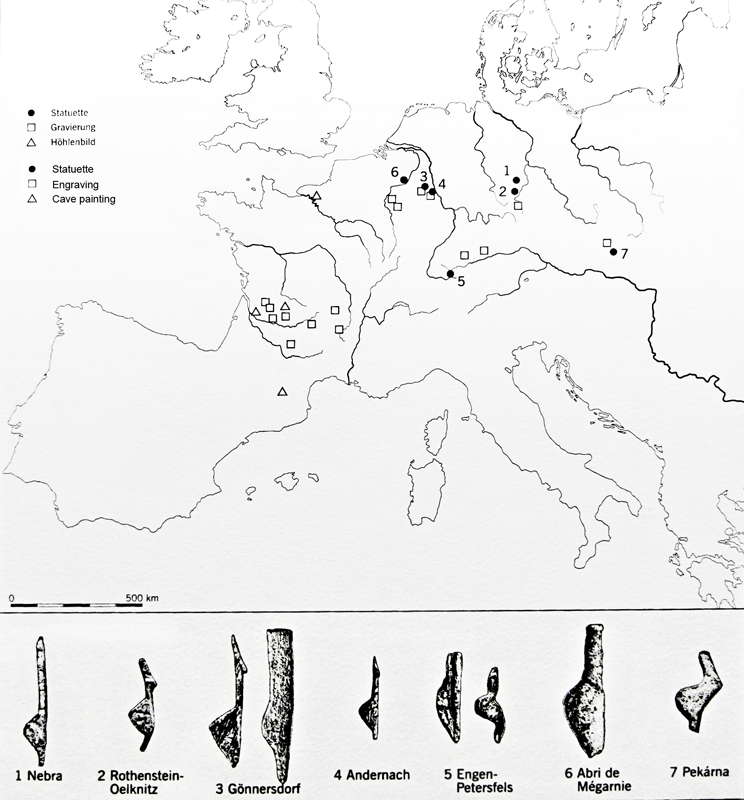
Distribution of Gönnersdorf type representations in Europe.
Photo: Daly Galaxy
Permission: licensed under the Creative Commons license Attribution-Noncommercial-Share Alike 3.0 Unported license.
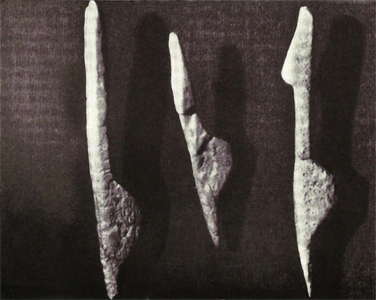
Nebra figurines.
Photo: Drößler (1967)

Nebra figurines.
Photo: Drößler (1980)
Sandsteinplatte mit skizzierter Frauenarstellung
Sandstone slab with an engraving of the outline of a woman.
Bad Kösen-Lengefeld, Burgenlandkreis
The Magdalenian site of Bad Kösen-Lengefeld is located near the Saaleck site (#22 on the map above), however above the Saale river. The similarities between the stone tools suggest that these two sites existed simultaneously even though there are no direct datations yet of the site of Bad Kösen-Lengegfeld.
Besides stone tools there are two engraved stone plaquettes. One of them, a probable female figure of Lalinde-Gönnersdorf type, was very finely engraved and is barely visible. The second plaquette shows numerous engraved lines, some of them in parallel order.
Artist: Unrecorded, Halle Landesmuseum für Vorgeschichte, https://st.museum-digital.de/, CC-BY-NC-SA @ State Museum of Prehistory Halle
Photo: Don Hitchcock 2018
Source and text: Halle Landesmuseum für Vorgeschichte, https://st.museum-digital.de/, CC-BY-NC-SA @ State Museum of Prehistory Halle
Additional text: Braun (2018)

This image shows three very similar venuses from Nebra.
Photo: http://nebra-06642.de/de/venus.htm
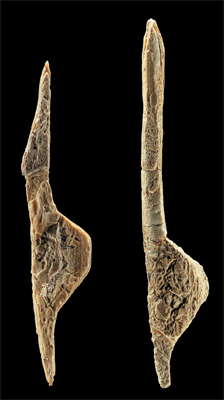
These are the venuses on the extreme left and right of the photo above.
Photo: http://www2.archlsa.de/schoenheit/bilderexpos/76pic.jpg
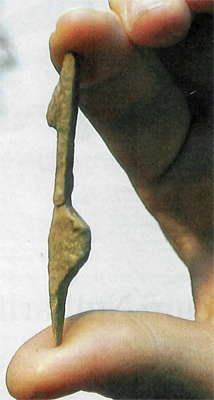
Another version of the original Venus of Nebra.
Photo: http://www.myheimat.de/sachsen-anhalt/nebra-unstrut/bildergalerie/altenburg-m1488243.html#image
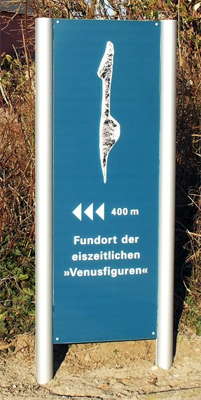
Sign leading to the site of the Nebra Venus.
Photo: http://www.myheimat.de/sachsen-anhalt/nebra-unstrut/bildergalerie/altenburg-m1488237.html
The cold climate at Nebra was countered with windproof clothing clothing and sturdy tent huts. More than than ever before, effectively shaped tools allowed the precise processing of a wide variety of raw materials: For example, scrapers for fur processing, fine drills, sewing needles made from bone and antler, and burins for for the extraction of the needle blanks.
The effort expended in the manufacture of clothing was not only not only for its protective function, but also an obviously increased need for representation, including carefully pierced canine teeth of predatory animals canines of predatory game and deer, as well as snail shells, which were threaded into necklaces and pendants. Red, white and black colours were also used to ornament leather. There is no doubt that these signs of the aesthetic sensibility are also signals of individual identity and thus a component of social communication.
Photo: Don Hitchcock 2018
Source and text: Halle Landesmuseum für Vorgeschichte, CC-BY-NC-SA @ State Museum of Prehistory Halle
Reindeer antler fragment. The grooves are formed by the extraction of needles.
Nebra, Burgenlandkreis.
Photo: Don Hitchcock 2018
Source and text: Halle Landesmuseum für Vorgeschichte, CC-BY-NC-SA @ State Museum of Prehistory Halle
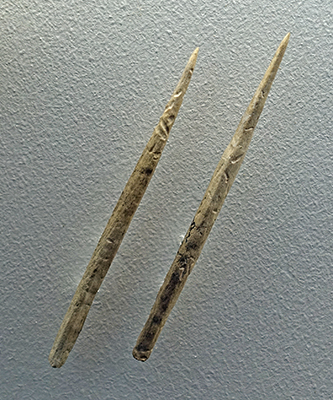
Needle-like bone pieces.
Nebra, Burgenlandkreis.
Photo: Don Hitchcock 2018
Source and text: Halle Landesmuseum für Vorgeschichte, CC-BY-NC-SA @ State Museum of Prehistory Halle
(left) Microliths placed in a row along a groove on an organic spear head.
(right) Close up of some of the microliths. Note how uniform they are.
( One of the reasons for the greater leisure time that the people of Nebra had to create beautiful carvings and venus figures was that they had embraced much better methods of hunting. A good knapper could turn out dozens of microliths in a very short time, each of which was razor sharp, and took very little of the good quality flint used.
However when glued (probably with birch bark glue) along a groove in a spear head which was itself then attached with cord whipped to the main shaft of a dart thrown by an atlatl, the result was lethal.
The spear head thus became very sharp at its point, and stayed narrow along its length, meaning that the spear head could penetrate the prey easily, and was driven deep into the body, creating a significant wound with resulting shock (internal loss of blood) which brought the prey down very quickly, meaning that no time was wasted tracking a wounded animal. A clean kill also meant that the spear head and shaft could often be reused because little damage to the dart ensued - Don )
Nebra, Burgenlandkreis.
Artist: unrecorded, Halle Landesmuseum für Vorgeschichte, CC-BY-NC-SA @ State Museum of Prehistory Halle
Photo and rephotography: Don Hitchcock 2018
Source and text: Halle Landesmuseum für Vorgeschichte, CC-BY-NC-SA @ State Museum of Prehistory Halle
References
- Braun I., 2018: Upper Palaeolithic portable art objects in Central Germany and supra-regional parallels, PALEO, Revue d'archéologie préhistorique, 29 | 2018, URL: http://journals.openedition.org/paleo/3756 DOI: 10.4000/paleo.3756 ISSN: 2101-0420, Publisher SAMRA
- Cook, J., 2013: Ice Age art - the arrival of the modern mind, The British Museum Press, 26th May 2013
- Drößler R., 1967: Die Venus der Eiszeit, Prisma-Verlag, pp 268.
- Drößler R., 1980: Kunst der Eiszeit, Koehler & Amelang , pp 241.

